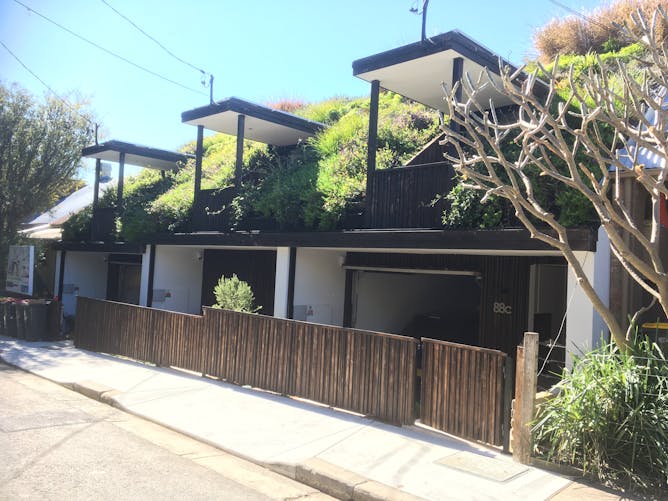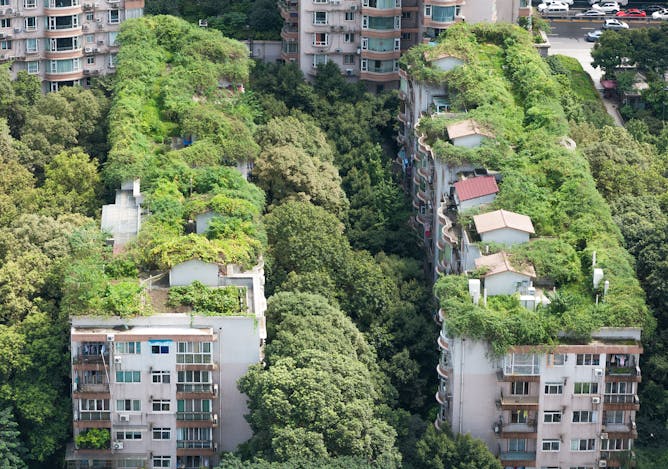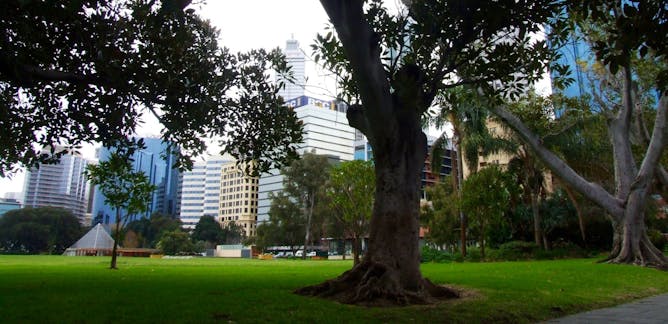|
|
|
Editor's note
|
|
Everyone loves green, but the more of us there are, the less of it we have. It doesn’t have to be this way though. We can keep the trees, flowers and shrubs, even while we build more tall apartment blocks that cluster so close to each other, it seems there’s no space for anything else.
In today’s special newsletter on green cities, Philip Gibbons explains why old eucalypts are important for the local habitat. Paul Osmond takes us through the different ways cities around the world have retained vegetation, including on roofs and walls, and through the rise of community gardens. While Sara Wilkinson, Paul Brown and Sumita Ghosh show how
Australian governments can create incentives for residents to invest in green rooftops, which research shows, among many benefits, increase property prices.
But let’s hope you only spend some of your Sunday reading inside, and the rest enjoying the great outdoors.
|
Sasha Petrova
Deputy Editor: Health + Medicine
|

|
|
|
|

Mature trees have horizontal branches that are attractive to wildlife and birds.
from shutterstock.com
Philip Gibbons, Australian National University
The ecological value of old trees is irreplaceable for native Australian fauna. Identifying and preserving these trees in cities through smarter planning strategies is important for local wildlife.
|
|
|

Green rooftops give a backyard feel to smaller housing units in Sydney
Author Provided
Sara Wilkinson, University of Technology Sydney; Paul J Brown, University of Technology Sydney; Sumita Ghosh, University of Technology Sydney
Research shows if Australia encourages greenery on buildings, it will reduce temperatures in the city, as well as potential for flash flooding. It also creates new habitats and socialising spaces.
|

Garden roofs (like these in Chengdu, in China’s Sichuan province) need maintenance and community involvement.
from shutterstock.com
Paul Osmond, UNSW
Dense, high buildings limit the space available for urban greenery. But imaginative projects that involve the community can ensure nature and the city go hand in hand.
|
|
|

Zoe Myers, University of Western Australia
Drains take up precious but inaccessible open space in our cities. Converting these to living streams running through the suburbs could make for healthier places in multiple ways.
| |

Danica-Lea Larcombe, Edith Cowan University
Health benefits of being close to nature are well established, but the rise of apartment living means we can't always be close to greenery.
|

Pierre Horwitz, Edith Cowan University
Urban bushland has health benefits beyond being a great place to go for a walk. Planners need to consider these when making decisions about the future of our cities.
| |

Marco Amati, RMIT University; Alex Saunders, University of Western Australia; Bryan Boruff, University of Western Australia; Drew Devereux, CSIRO; Kath Phelan, RMIT University; Peter Caccetta, CSIRO
A new study shows major Australian cities are suffering an overall loss of green space –
although some areas are doing better than others.
|
|
|
| |
Featured jobs
|

|
University of Sydney — Sydney, New South Wales
|

|
University of Melbourne — Parkville, Victoria
|

|
The University of Adelaide — Adelaide, South Australia
|

|
La Trobe University — Bundoora, Victoria
|
|
|
|
| |
| |
| |

|
| |
| |
| |
Featured events
|
|
|
192 Wellington Parade, Melbourne, Victoria, 3002, Australia — Association for Sustainability in Business
|
|
|
14-20 Blackwood St , North Melbourne, Victoria, 3051, Australia — Victorian Responsible Gambling Foundation
|

|
221 Burwood Highway, Burwood, Victoria, 3125, Australia — Deakin University
|

|
Deakin Downtown, Level 12, Tower 2 Collins Square, 727 Collins Street, Docklands, Victoria, 3008, Australia — Deakin University
|
|
|
|
| |
| |
| |
| |
| |
|
|
|
|
|
|
|